Haitian cuisine offers a rich blend of bold flavors and vibrant traditions, reflecting the cultural diversity of Haiti. From savory stews to spiced meats and refreshing sides, each dish tells a story of the island’s history and culinary influences.
By exploring these 15 Haitian recipes, you will discover the essence of this unique and flavorful cuisine. These recipes are perfect for anyone looking to add new and exciting dishes to their meal rotation, whether you’re familiar with Haitian food or just beginning to explore it. Enjoy a taste of Haiti with these delicious and authentic recipes.
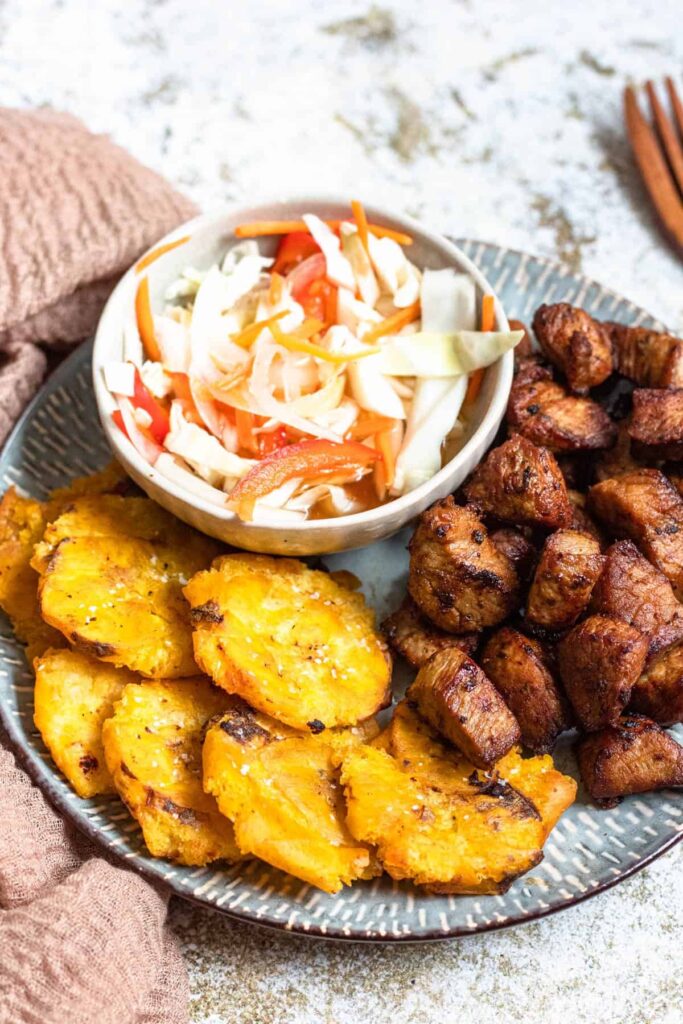
1) Griot
Griot is a beloved Haitian dish made with marinated pork chunks. It is often reserved for special occasions and gatherings due to its flavorful taste.
To start, clean the pork thoroughly. Use a mixture of lime juice, vinegar, and salt. Apply the lime halves to the meat to cover it well.
Next, marinate the pork for at least a few hours, preferably overnight. Use ingredients like sour orange juice, lemon juice, apple cider vinegar, thyme, garlic, onions, and bell peppers. All these flavors combine to give griot its unique taste.
When you’re ready to cook, you can choose to fry the griot. Heat vegetable oil in a large pot or Dutch oven over medium-high heat. Fry the pork until it becomes golden brown and crispy. Make sure to drain the excess oil on paper towels.
If you prefer, you can also reheat leftover griot. Use methods such as the stovetop, oven, or microwave. Just cover the meat to retain its moisture. Griot is best served immediately after cooking, but it can be enjoyed later if reheated properly. This ensures the meat stays tender and flavorful.
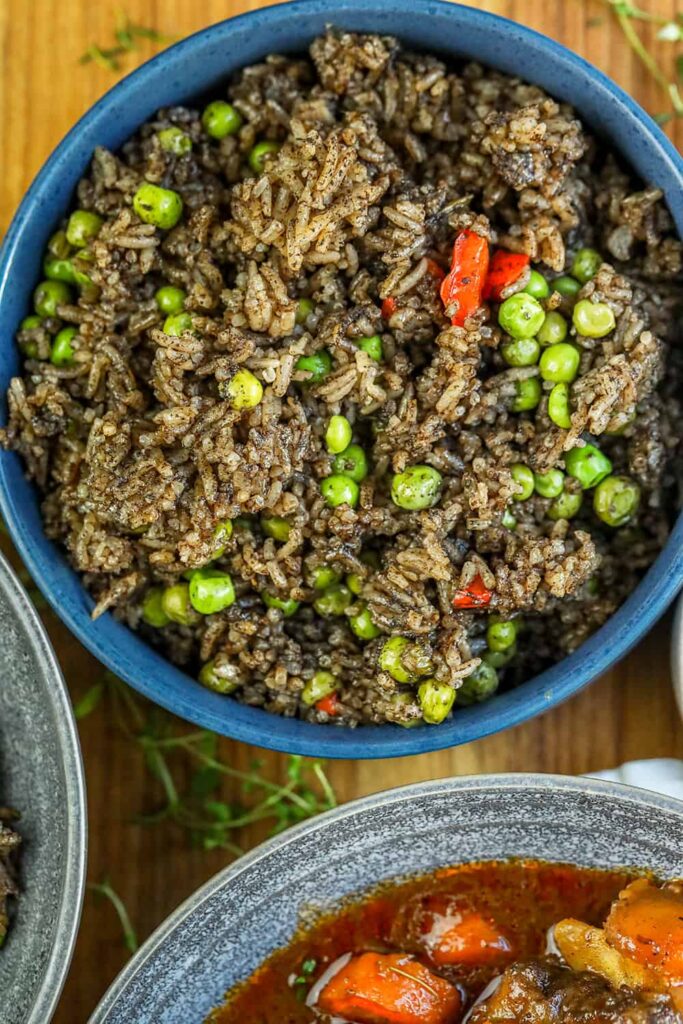
2) Diri Ak Djon Djon
Diri Ak Djon Djon, or Black Mushroom Rice, is a famous Haitian dish. The unique flavor comes from djon djon mushrooms, which are native to northern Haiti. These mushrooms turn the rice a dark color and add a special aroma and taste.
You need to soak the mushrooms for at least two hours. This helps release their dark color. Then, boil the mushrooms to extract the broth, which will be used to cook the rice.
Common ingredients include long-grain rice, garlic, thyme, onion, and sometimes Scotch bonnet peppers. Some recipes also add lima beans or roasted cashews for extra texture and flavor.
To start, heat oil in a pot and sauté garlic, onions, and thyme. Pour in the djon djon broth and bring it to a boil. Add the rice and cook until it’s tender and absorbs the broth.
Diri Ak Djon Djon is often served at special occasions or family gatherings. Its unique taste and distinct color make it stand out on any dinner table.
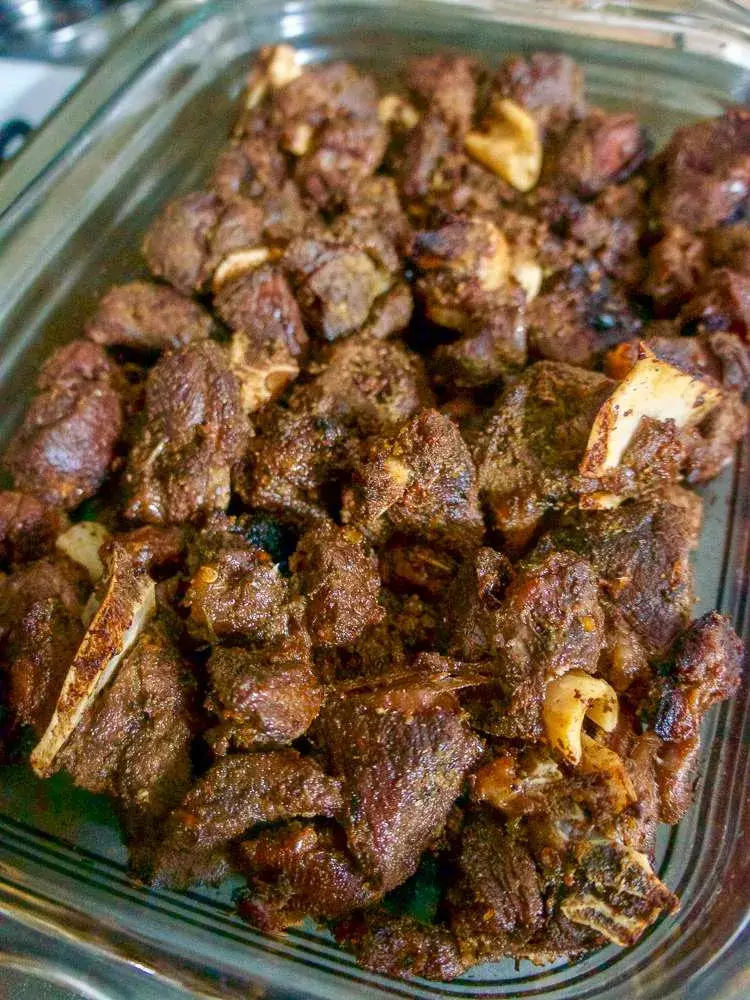
3) Tassot
Tassot is a popular Haitian dish usually made with goat, but you can also use beef or turkey. The meat is marinated with a mix of citrus juices, garlic, hot pepper, and salt. This gives it a rich and spicy flavor that is unique to Haitian cuisine.
To prepare Tassot, you first need to clean the meat with lime or vinegar. After that, marinate it for at least 30 minutes, though overnight is better for deeper flavors.
When it’s time to cook, the meat is boiled until tender. You may need to add water during this process to keep it moist. Once the meat is cooked, it’s typically fried until crispy, adding a delightful texture.
Many recipes suggest using Haitian Epis, a seasoned purée, to enhance the flavor even further. You might also add other spices like ground cloves or cayenne pepper.
Tassot is often served with rice and beans, or fried plantains. It’s a versatile dish that can be enjoyed on special occasions or as a flavorful everyday meal.
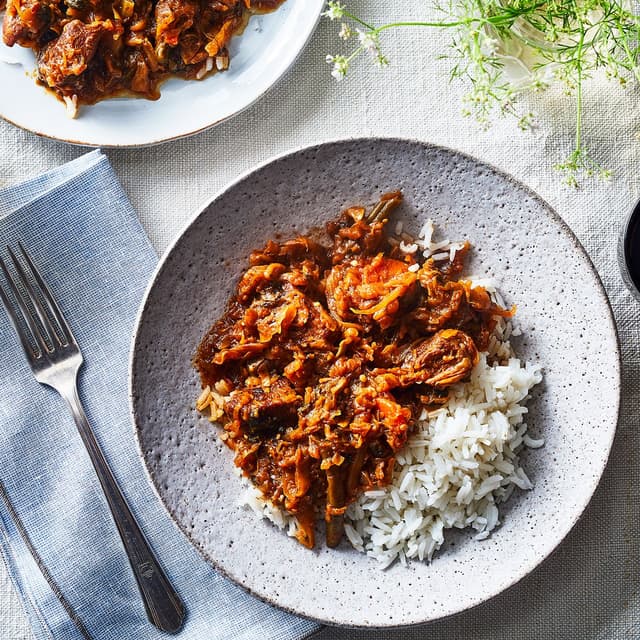
4) Legim
Legim, also known as Haitian Legume, is a flavorful and hearty vegetable stew that is a staple in Haitian cuisine. This dish typically includes a variety of vegetables like cabbage, carrots, eggplant, chayote, and spinach.
To start, you marinate pieces of beef or other meats with lime juice, garlic, and spices. Rinse and drain the meat before placing it in a pot with oil.
You will cook the meat over medium heat until it is browned. Then, you add a mix of vegetables and some water. Cover the pot and let the vegetables cook until tender.
For an extra burst of flavor, you can use a spice paste called “epis,” made from scallions, parsley, onions, bell peppers, and other spices. This paste enhances the dish’s rich taste.
Once the vegetables are cooked, mash them slightly to get a thick consistency without making it too mushy. You can serve Legim over rice or with a side of fried plantains. This stew is perfect for a comforting and nutritious meal.
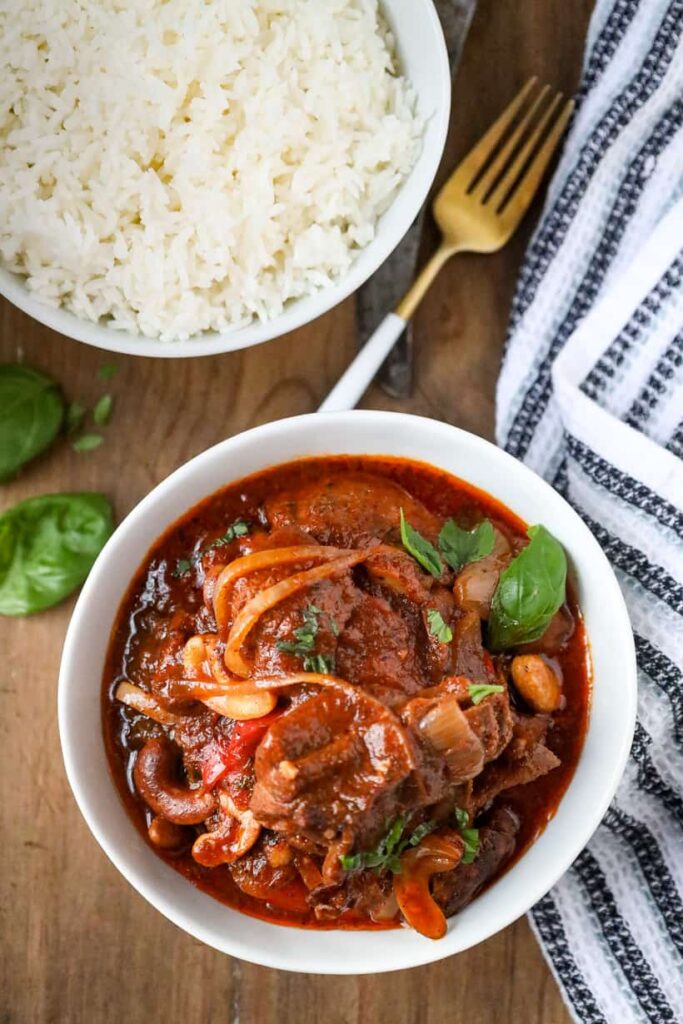
5) Poulet Aux Noix
Poulet Aux Noix is a flavorful Haitian dish made with chicken and cashews. It’s a perfect blend of spices and textures.
To start, you marinate the chicken pieces with lime juice, epis (Haitian seasoning), and black pepper. It’s best to let the chicken marinate for at least 8 hours in the refrigerator.
Once marinated, you cook the chicken in a large pot or Dutch oven. Begin by searing the chicken until it’s golden brown on all sides.
After searing, you’re ready to add tomato paste and let it cook on low heat for a couple of minutes. This adds a rich depth of flavor to the dish.
Next, pour in chicken stock or broth and mix in cashew powder until everything is well-combined. Simmering the chicken mixture allows the flavors to meld together.
As the chicken cooks, it becomes tender and starts to fall off the bone. For added flavor, you can stir in diced onions and bell peppers before re-covering the pot.
Poulet Aux Noix is often served with rice, making it a hearty and satisfying meal. The combination of savory chicken and crunchy cashews creates a unique and delicious experience.
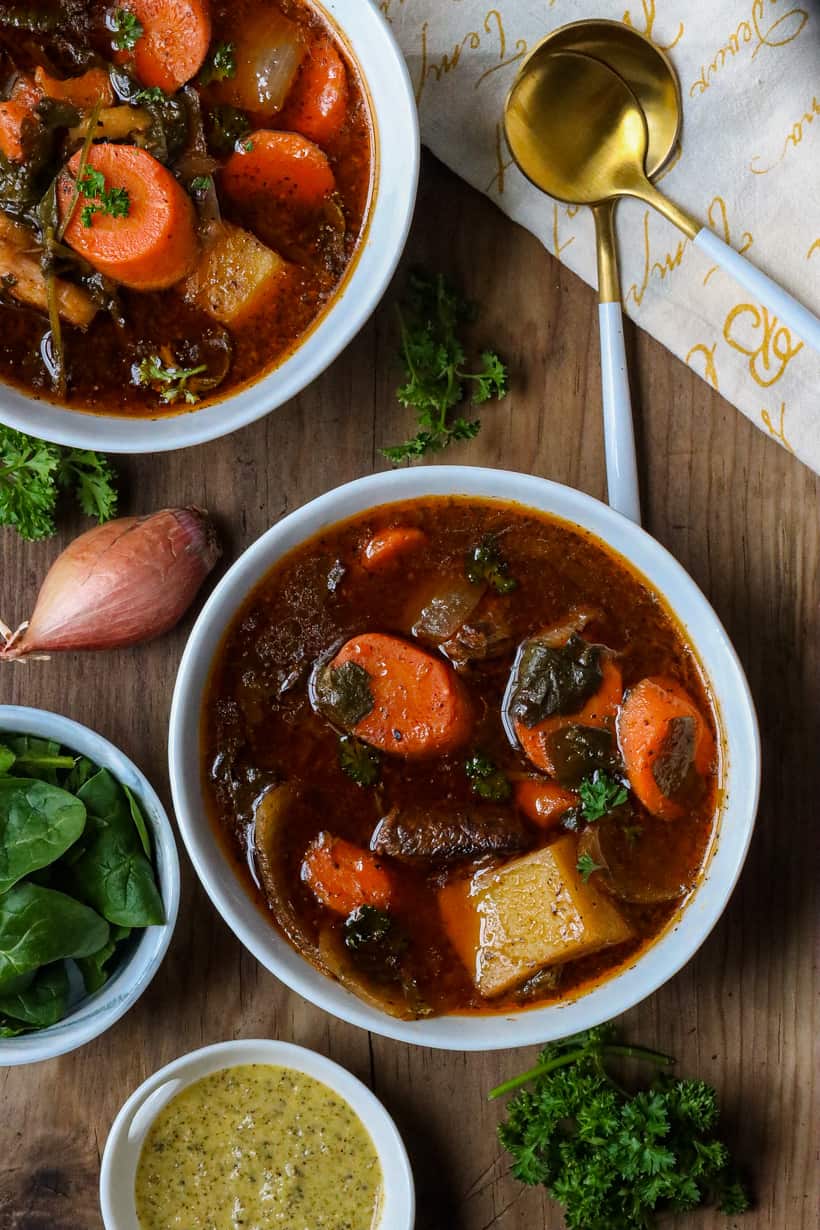
6) Bouillon
Bouillon is a hearty Haitian soup known for its rich flavors. It typically includes a mix of meats, vegetables, and spices, making it both filling and nutritious.
To start, you brown beef pieces in a pot over medium heat. Adding thyme, parsley, bay leaves, and cloves brings out a deep, aromatic taste.
Vegetables like potatoes, sweet potatoes, malanga, and spinach are added to the pot. Each ingredient is peeled and cut into cubes or slices.
Next, add water to the pot and bring it to a boil. Lemon juice and more spices can be included for extra flavor. You simmer these ingredients together for a while to let the flavors meld.
Bouillon is popular because it’s both delicious and packed with nutrients. It’s a staple in Haitian cuisine, enjoyed by locals and visitors.
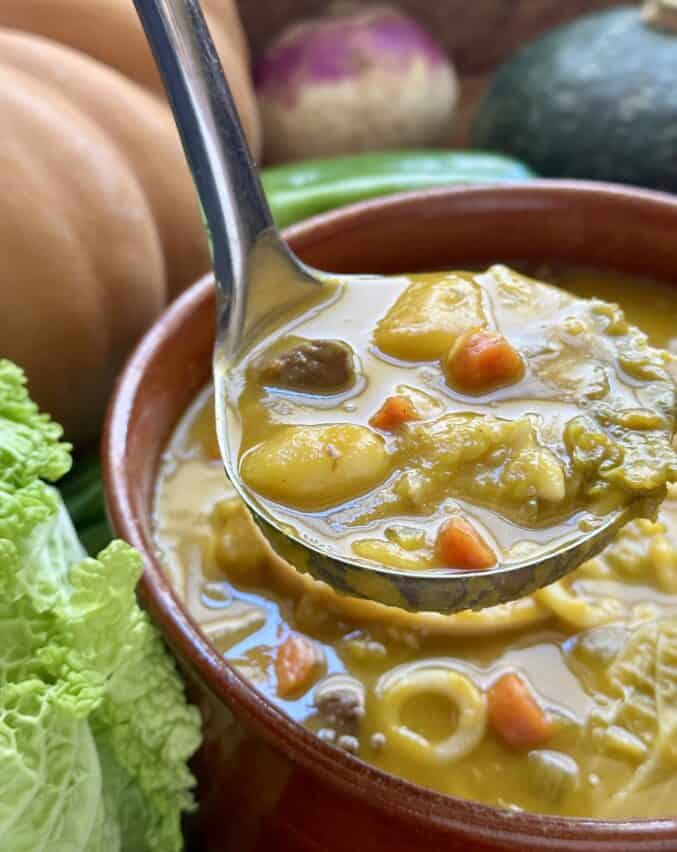
7) Soup Joumou
Soup Joumou is a traditional Haitian pumpkin soup often made on January 1st to celebrate Haiti’s Independence Day. This soup is bursting with flavors and has a rich history.
You start by cleaning the meat with lime, lemon, or vinegar. Rinse it with cold water and pat it dry. Add the meat to a pot along with lime juice, scallions, hot pepper, garlic, onions, thyme, parsley, black pepper, and salt. Mix the ingredients well.
Cook the squash until tender, usually around 35 minutes. Remove and cut it into small pieces, leaving the skin on if you prefer. Blend the squash with vegetable broth and water until it is smooth and creamy.
Transfer the marinated meat to a large bowl and pour epis seasoning on top. Cover and refrigerate for at least 4 hours. When ready, combine the marinated meat with the blended squash in a large pot.
Adding more spices and vegetables, like carrots, potatoes, and cabbage, can enhance the flavor. Let the soup simmer until everything is tender and well-cooked.
Serve hot and enjoy this delicious and historic Haitian dish.
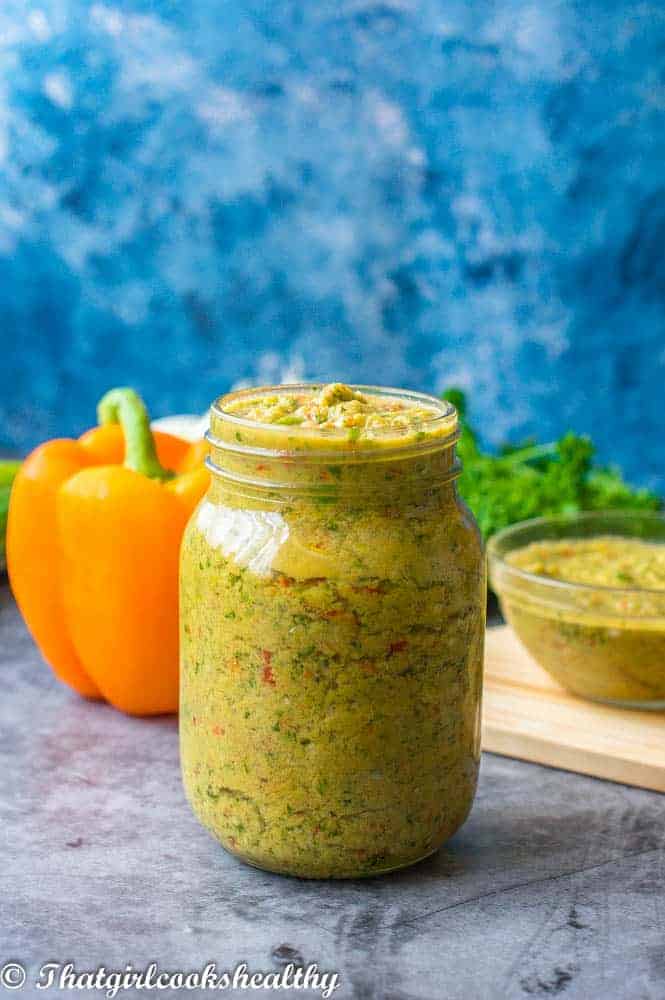
8) Zepis
Zepis, also known as Haitian Epis, is a key seasoning base in Haitian cuisine. This mixture of herbs, vegetables, and spices forms the backbone of many dishes.
To make Zepis, you need ingredients like parsley, garlic, onions, thyme, and scallions.
You can vary the recipe with additional items like green bell peppers, leeks, or other herbs and spices.
Blend everything together using a food processor to create a loose paste.
This paste is then used to flavor soups, stews, and rice dishes.
You can also use it as a marinade for meats and fish.
Storing Zepis is easy; just pour it into a mason jar and refrigerate. It should last for up to 5 days.
Zepis is a versatile ingredient that elevates the taste of Haitian cuisine with its vibrant flavors.
Having some Zepis on hand can make cooking Haitian dishes more convenient and authentic.
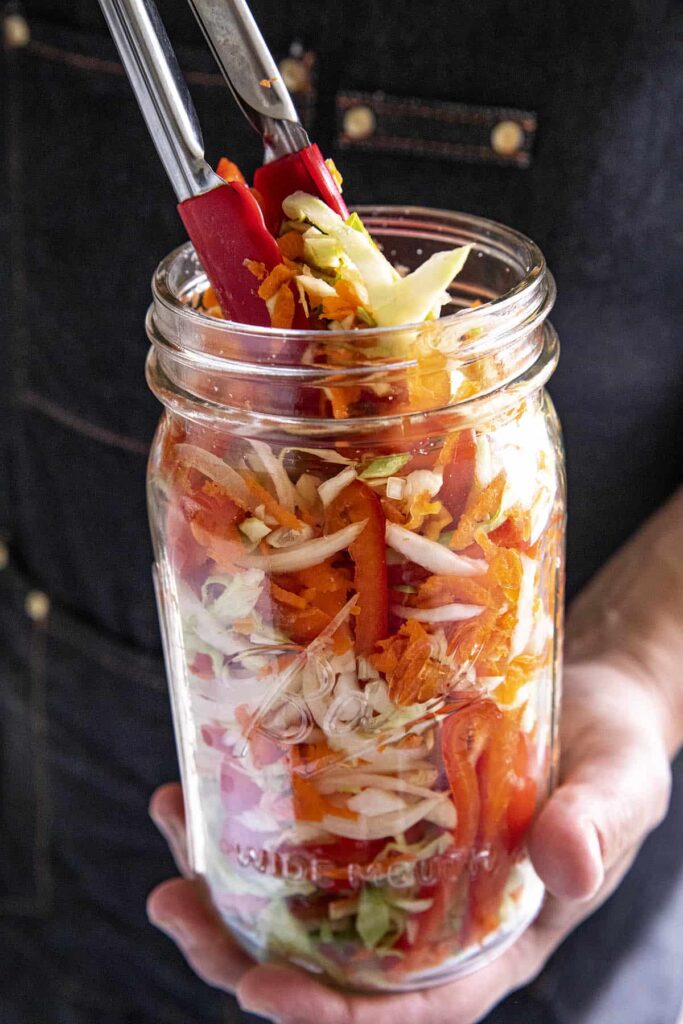
9) Pikliz
Pikliz is a spicy pickled vegetable relish from Haiti. It adds a vibrant and tangy flavor to many dishes. You can put it on grilled meats, rice, or even sandwiches. It’s quick to prepare and lasts long in the fridge.
To make pikliz, you’ll need a few basic ingredients like cabbage, carrots, and peppers. Add onions, shallots, and Scotch bonnet peppers for heat. The vegetables need to be thinly sliced or shredded for even pickling.
Season the mix with spices such as cloves, salt, and peppercorns. Pack everything tightly into a mason jar. Pour in vinegar and lime juice. Seal the jar and give it a good shake to distribute the flavors.
Let the jar sit for at least 24 to 48 hours. This allows the vegetables to absorb the flavors and get a good crunch. The longer you let it sit, the better it will taste. Refrigerate it to keep it fresh for weeks.
Include pikliz in your meals for a burst of spice and acidity. It’s a great way to enhance the flavors of your favorite Haitian dishes and bring a touch of authenticity to your cooking.
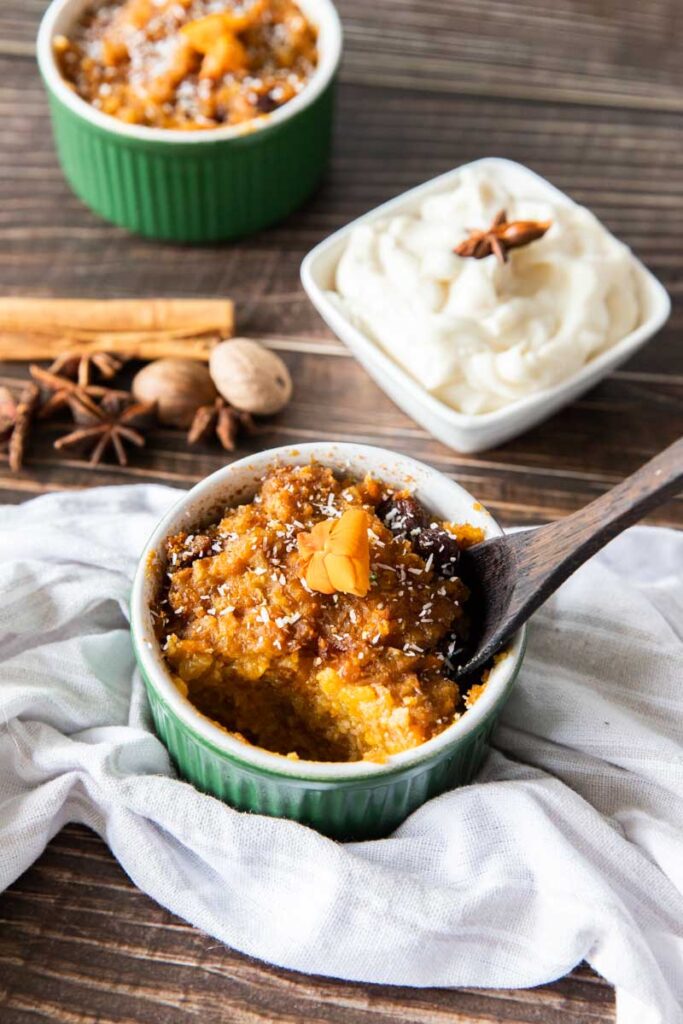
10) Pain Patate
Pain Patate is a traditional Haitian dessert that combines sweet potatoes, bananas, and coconut milk. This dish is flavorful and perfect for dessert lovers.
First, you preheat your oven, usually to about 375℉. Grate sweet potatoes and mash bananas. Mixing these with coconut milk gives the dish its rich, creamy texture.
You then add butter, spices, and sugar to the mix. Stir everything in a large bowl until well-blended. Pour the mixture into a greased baking dish.
Bake it in the oven for around 55 minutes or until a toothpick comes out clean. Let it cool for at least an hour before serving.
You can enjoy Pain Patate on its own or with toppings like ice cream or whipped cream. It’s a staple in Haitian cuisine and a sweet treat you’re likely to love.

11) Akasan
Akasan is a beloved Haitian breakfast drink. It has a creamy texture and is made with corn flour.
To make Akasan, you start by boiling water with salt, cinnamon, and anise star. The spices give it a nice flavor.
You mix corn flour with water to form a paste. Slowly add this paste to the boiling water while stirring.
Sugar and a pinch of nutmeg or cinnamon can be added to sweeten the mixture.
Let the mixture simmer for 15-20 minutes, stirring frequently to prevent sticking.
You can adjust the consistency by adding more cornmeal or flour if it’s too thin.
Akasan can be served with fresh fruit, jam, or whipped cream for added flavor.
It’s a wonderful way to experience Haitian cuisine and is sure to become a favorite.
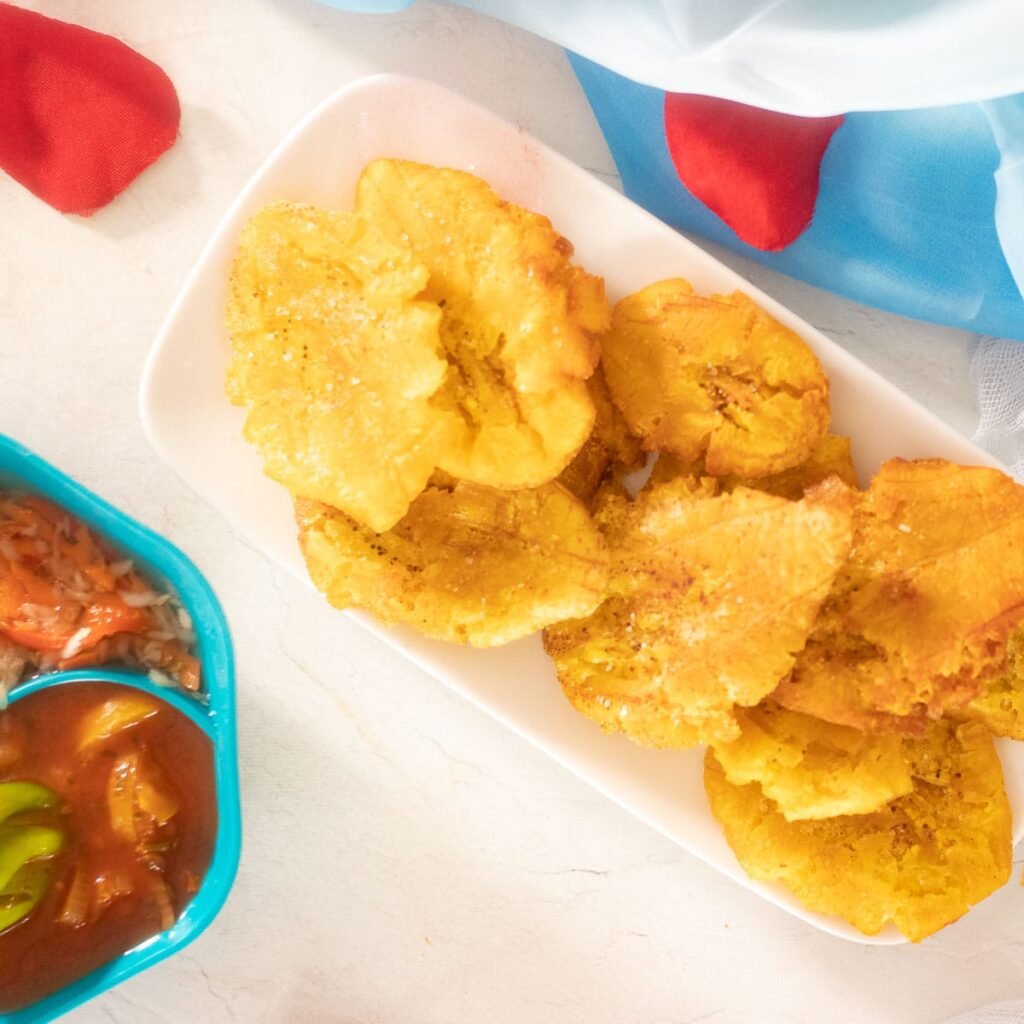
12) Banane Peze
Banane Peze, also known as fried plantains, is a beloved Haitian dish. It is often served as a side dish or snack.
To start, peel green plantains and cut them into large pieces. The pieces should be of equal size to ensure even cooking.
In a medium bowl, mix vinegar, salt, and water. Add the plantains to the mixture and let them soak for 5-10 minutes. This helps to infuse them with flavor.
Next, heat oil in a frying pan or deep fryer over medium heat. Pat the plantains dry and fry them until they start to turn golden brown. This usually takes about five minutes per side.
After frying, remove the plantains and press them flat using a plantain press or any flat object. Be gentle to avoid breaking them.
Place the pressed plantains back into the hot oil and fry until crisp and golden brown.
Serve Banane Peze hot with pikliz, a Haitian pickled vegetable relish, for added flavor. Enjoy!
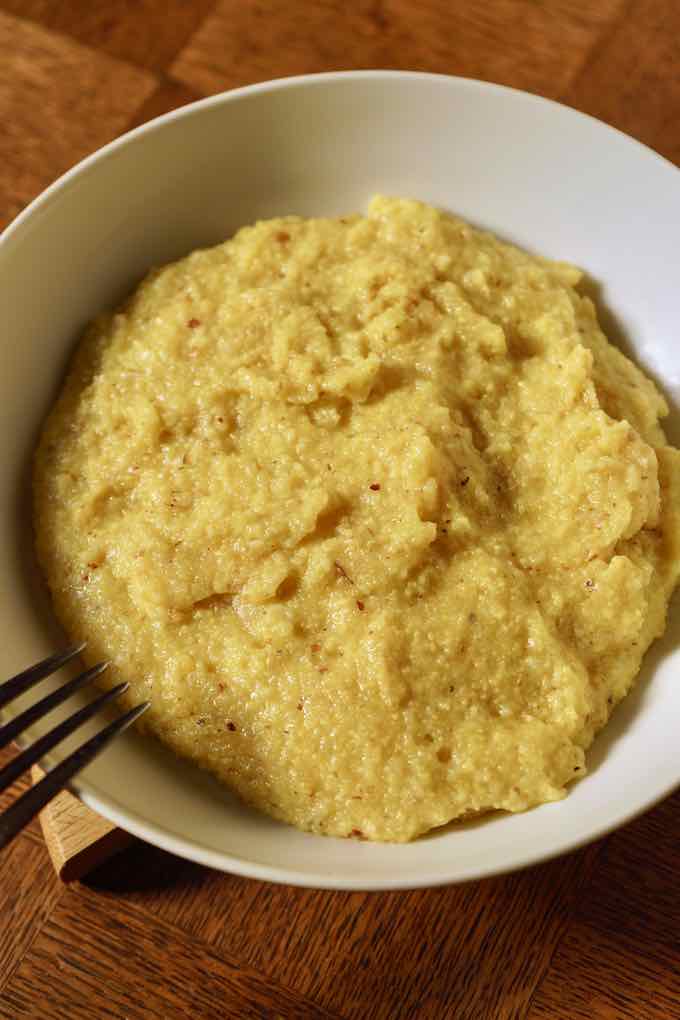
13) Mayi Moulin
Mayi Moulin, also known as Haitian cornmeal porridge, is a staple in Haitian cuisine. It’s made from cornmeal and often served with beans or a stew. This dish is simple yet full of flavor, making it a popular choice for breakfast or a side dish.
Start by rinsing the cornmeal until the water runs clear. In a medium saucepan, heat oil over medium heat. Add chopped onions and cook until they soften.
Next, add water and bring it to a boil. Slowly pour in the cornmeal while stirring continuously to prevent lumps. You can add butter, salt, and pepper to enhance the taste.
Let it cook for about 25-30 minutes, stirring occasionally. The mixture should thicken and reach a porridge-like consistency. Once done, remove it from heat and let it rest for a few minutes.
Fluff the Mayi Moulin with a fork before serving. It’s often paired with Sos Pwa Nwa, a black bean sauce, for a complete meal. Enjoy the warm, comforting flavors of this traditional Haitian dish.
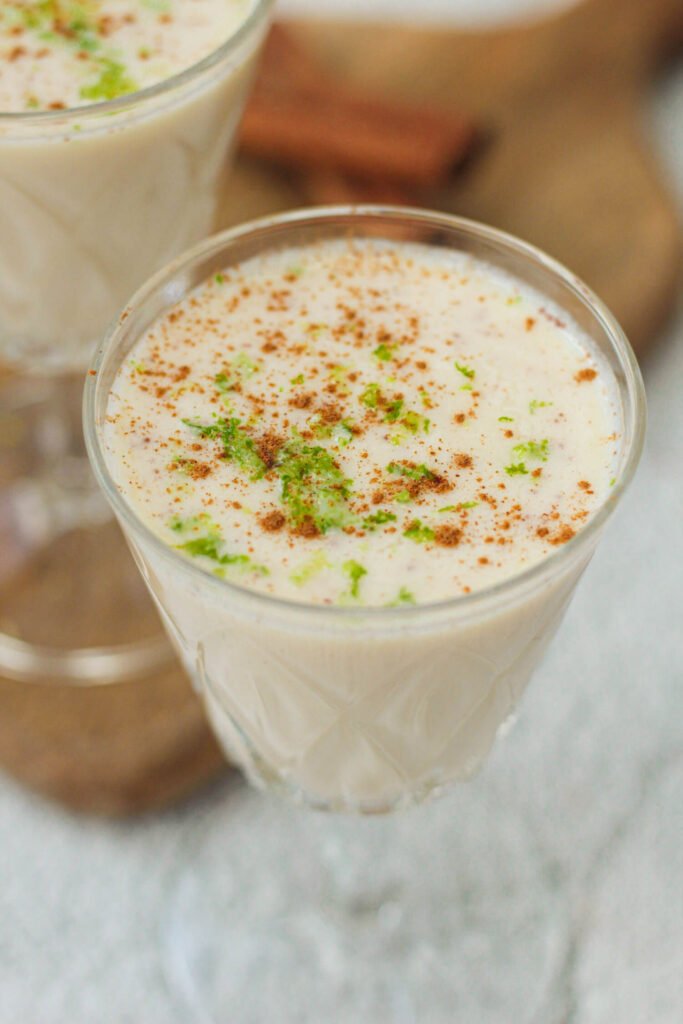
14) Kremas
Kremas is a beloved Haitian drink. It’s creamy and thick, similar to a milkshake. You will often find it at social events and during holidays.
To make Kremas, you combine sweetened condensed milk, coconut milk, and evaporated milk. These ingredients create a rich, smooth base.
To this base, you add vanilla extract, ground cinnamon, and ground nutmeg. Fresh lime juice is also added, which enhances the flavor and helps thicken the drink.
Traditionally, Kremas also contains rum. The rum adds warmth and depth to the drink. It’s typically enjoyed in small glasses, often accompanied by a sweet pastry.
The combination of ingredients in Kremas results in a unique and delicious flavor. The coconut and condensed milk make it rich and creamy. The spices and lime juice add depth and brightness.
You can adjust the ingredients to suit your taste. Some people prefer more spice, while others like a stronger hint of lime. Experimenting with the recipe can make it perfect for you.
Kremas has a long history in Haitian culture. It has been enjoyed since the country’s independence in 1804, making it a significant part of celebrations.
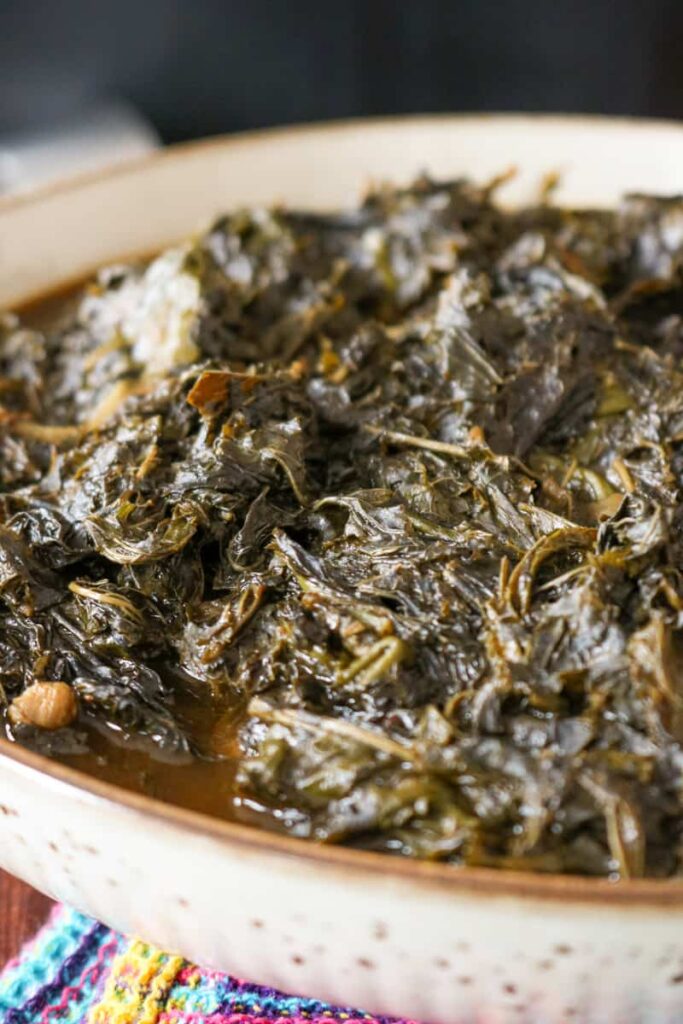
15) Lalo
Lalo is a traditional Haitian dish made with jute leaves, which are also known as lalo. This greens-based stew is often prepared with beef, pork, or seafood like blue crab.
To start, soak dried jute leaves overnight in a large bowl of water. This helps to soften them. Once soaked, rinse the leaves well and set them aside.
In a heavy-bottom pot, heat some oil and lightly fry pieces of beef and pork. Turn each piece over to ensure even cooking on both sides.
Next, add chopped spinach and the soaked jute leaves to the pot. Pour in about 1-1 ½ cups of water. Cover the pot and let it cook for about an hour.
Season the stew with garlic, onions, thyme, and parsley. You can also add salt, black pepper, and bouillon. Stir occasionally and adjust the seasonings as needed.
Sometimes, lemon or lime juice is added for a slight tangy flavor. Let the stew simmer until the meat is tender and the flavors are well combined.
Serve Lalo hot, often accompanied by white rice or a side of plantains.
Cultural Significance of Haitian Cuisine
Haitian cuisine reflects the country’s rich history and its vibrant culture. The food is not just about flavors but is also deeply connected to traditions and celebrations.
Historical Influences
Haitian cooking draws from various influences, including African, French, Spanish, and native Taíno customs. Slaves brought from Africa introduced ingredients like yams, okra, and black-eyed peas. French colonists left a mark with methods like sautés and sauces. Spanish influence is evident in the use of rice and beans. Taíno contributions include the use of cassava and maize.
These combined influences have created unique, flavorful dishes. For instance, the use of spices and herbs in Haitian cuisine showcases the blend of these diverse backgrounds. The griot (fried pork) and tassot (fried beef or goat) highlight the African seasoning practices infused with European cooking techniques.
Food in Haitian Celebrations
Food plays a central role in Haitian celebrations and rituals. During religious events like Haitian Vodou ceremonies, specific dishes are prepared as offerings to the spirits. Dishes like soup joumou (pumpkin soup) are essential during Independence Day on January 1st, symbolizing freedom and unity.
Family gatherings and festivals often feature communal meals. Weddings, christenings, and funerals involve sharing traditional dishes like diri ak djon djon (black mushroom rice) and banan peze (fried plantains). These events are incomplete without sos pwa (bean sauce) and pikliz (spicy pickled vegetables).
This communal sharing of food strengthens social bonds and preserves cultural values. Food is not just nourishment but a link between the past and the present, bringing people together in celebration and memory.
Common Ingredients in Haitian Recipes
Haitian cuisine is known for its vibrant and diverse flavors. The core ingredients often include a variety of fresh herbs, spices, and staple foods that give each dish its distinctive taste.
Spices and Herbs
In Haitian cooking, spices and herbs are crucial to creating the flavorful and aromatic dishes the cuisine is famous for. One essential ingredient is epis, a seasoning base made from a blend of garlic, green onions, bell peppers, parsley, and other fresh herbs. You can use epis as a marinade or cooking base for many dishes.
Other important spices include Scotch Bonnet pepper, which adds heat and a unique flavor; cloves, used in both savory and sweet dishes; and thyme, which pairs well with meats and vegetables. Fresh parsley is another staple, often preferred over cilantro for its milder flavor.
Haitian dishes also frequently use lime juice as a key ingredient, adding tanginess to marinades and stews. Nutmeg and cinnamon are popular in desserts and some savory dishes. These spices and herbs collectively provide the richness that characterizes Haitian food.
Staple Foods
Staple foods in Haitian cuisine often form the foundation of meals. Rice is a primary component in many dishes, commonly served with beans in a dish known as diri ak pwa. This dish is a corner-stone of Haitian dining, often seasoned with epis and garnished with fresh herbs.
Another staple is plantains, used in both ripe and green forms. Ripe plantains are sweet and used in dishes like banan peze (fried plantains), while green plantains are often boiled or mashed.
Cassava, breadfruit, and yams are also significant staples. These roots and tubers are frequently used in soups and stews or simply boiled and served with sauces. Haitian bread, known as pain patate, is often enjoyed with meals or as a snack.
Meat and seafood, such as goat, chicken, and red snapper, are often marinated in the rich flavors of spices and herbs before cooking. Poul ak nwa (chicken with cashews) is a notable example, highlighting the use of poultry in combination with bold seasonings.








